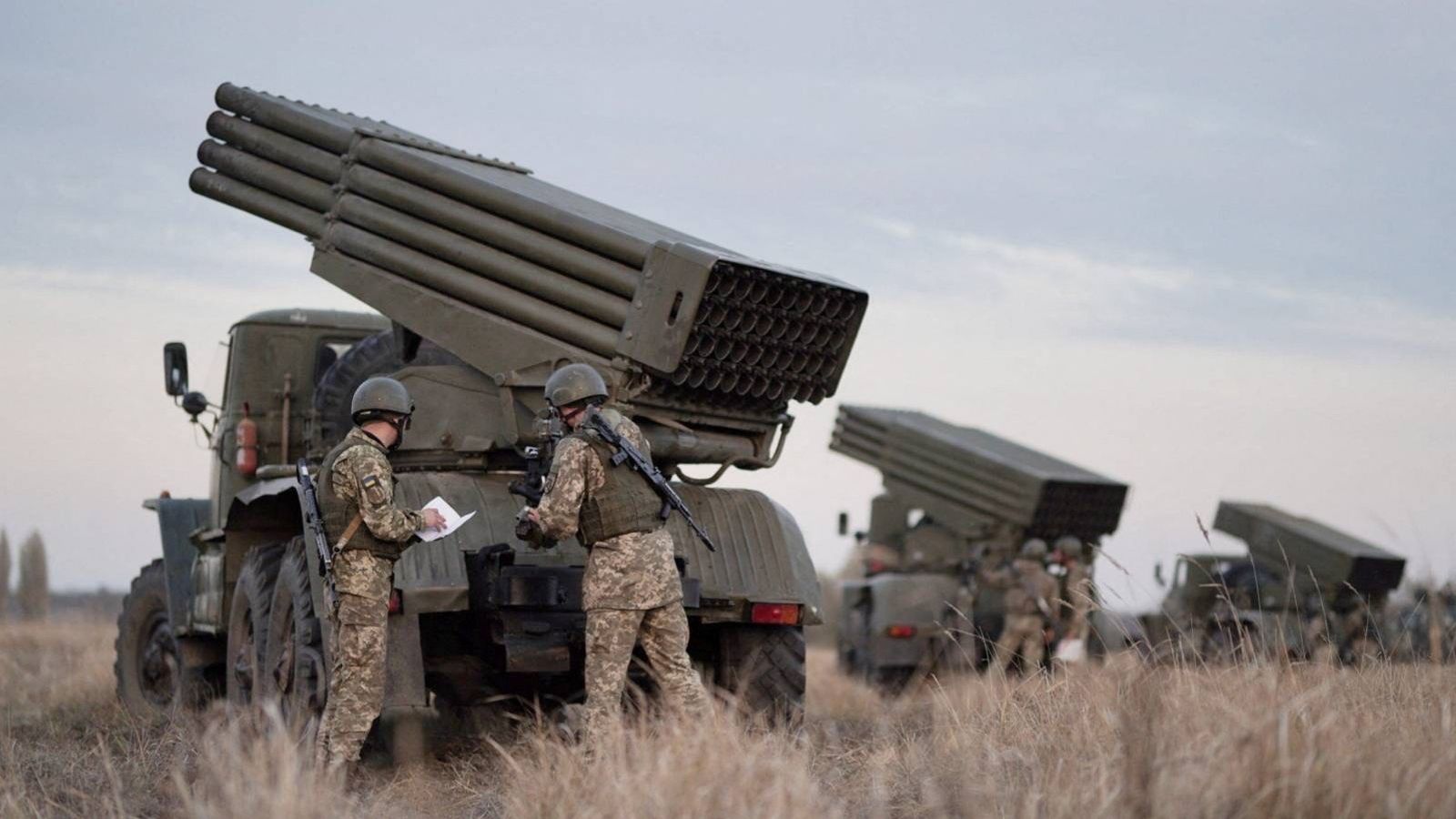With NATO bolstering its eastern flank, some UK and US embassy staff evacuating Kyiv and Britain warning of a Russian plot to install a puppet regime in Ukraine, signs of hostility seem far stronger than any signals of hope for a peaceful solution to a growing crisis with Russia.
It was only last Friday that Washington and Moscow agreed to extend a series of diplomatic talks aimed at trying to resolve the gravest threat to European security since – at least – the Cold War.
But in the intervening period, actions by both sides appear to indicate they are preparing or bracing for a wider war in Ukraine or at the very least are designed to intensify pressure on each other.
Please use Chrome browser for a more accessible video player
For Russia that has meant a continuation of a massive build-up of troops and weaponry around Ukraine’s borders, amplifying Western fears that a “lightning war” – as Prime Minister Boris Johnson put in on Monday – could be imminent despite Russian denials.
For Western allies, they are not yet in the business of attempting to match boot for boot, or tank for tank – it would be a very dark day were that to happen.
NATO has also always been mindful that any move its 30 member states make in Europe is viewed by Moscow as a provocation and a potential justification for Russian reinforcements in what could quickly become an escalatory ramp towards direct confrontation.
What’s going on at the Russia-Ukraine border?
Ukraine-Russia tensions: British couple’s ‘nerve-racking’ wait in Kyiv for baby’s passport
Ireland fires broadside at Russia over naval drills plan off coast – but lacks military muscle to do much else
NATO sends extra ships and jets, as UK pulls some embassy staff out of Ukraine and Ireland says war games off its coast are ‘not welcome’
But the West is still mobilising and getting ready for the worst – just in slightly different ways.
On Monday morning NATO announced it was “putting forces on standby” and sending extra warships and jets to eastern Europe to reinforce its defences.
This includes a Danish frigate to the Baltic Sea, four Danish warplanes to Lithuania and Spanish ships to contribute to NATO naval forces.
The deployments are small compared with the Russian display of military strength and are designed to strengthen NATO’s defences – rather than directly protect Ukraine, which is not a member state.
But they still demonstrate the allies are not waiting for something to happen in Ukraine before acting.
In another signal that conflict is considered more likely than a diplomatic breakthrough, Washington and London announced a decision to order the departure of some staff and families from their respective embassies in Kyiv.
Both countries said it was because of the Russian threat, though Ukraine accused them of acting prematurely and showing “excessive caution”.
The UK also took direct aim at Russia over the weekend, accusing Moscow of scheming to install a pro-Kremlin leader to head the government in Kyiv.
Please use Chrome browser for a more accessible video player
British officials will have known such a statement would infuriate the Russian government.
Britain has at times in the past refrained from publicly naming and shaming Moscow over suspected attacks and plots for exactly that reason.
But information is a weapon – no more so than at times of war – and it is being wielded by both sides.
Clearly a calculation was made by London, presumably with support from Washington, that now was the right time to shine a light on suspected Russian covert attempts to subvert Ukraine’s freedoms from within.
Again, making this sort of claim, which relied on a highly unusual move to allow the declassification of intelligence, is not the kind of action that perhaps would have been taken were optimism high in western capitals of there being a diplomatic path out of this crisis.






















